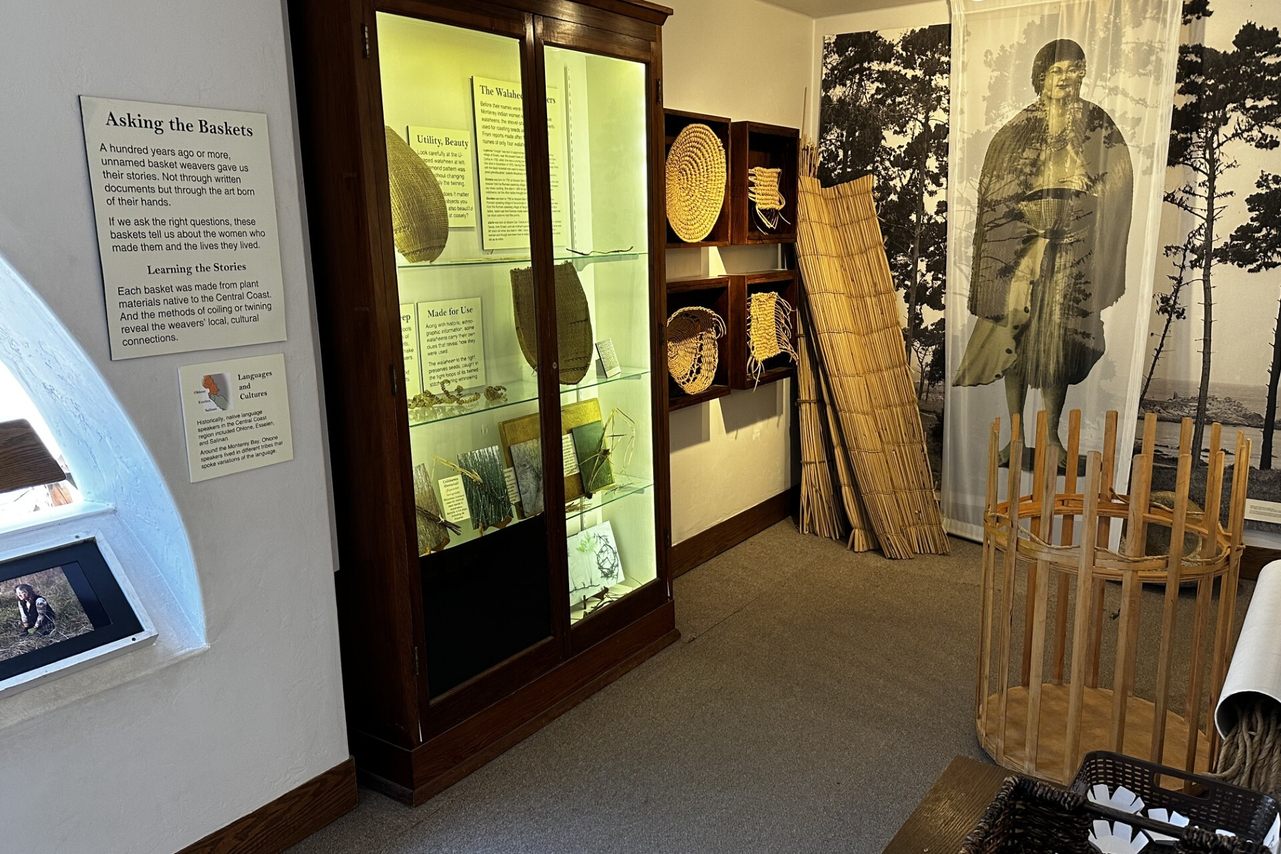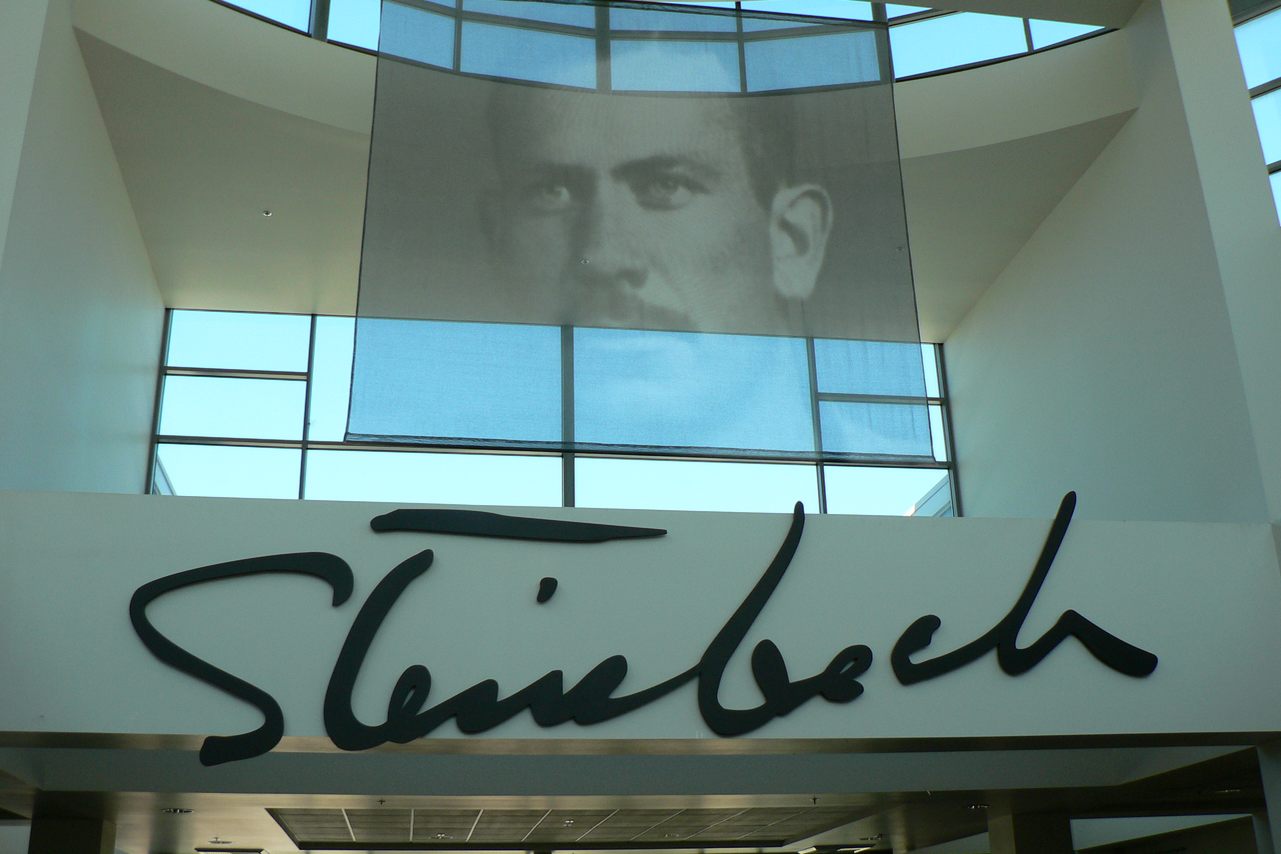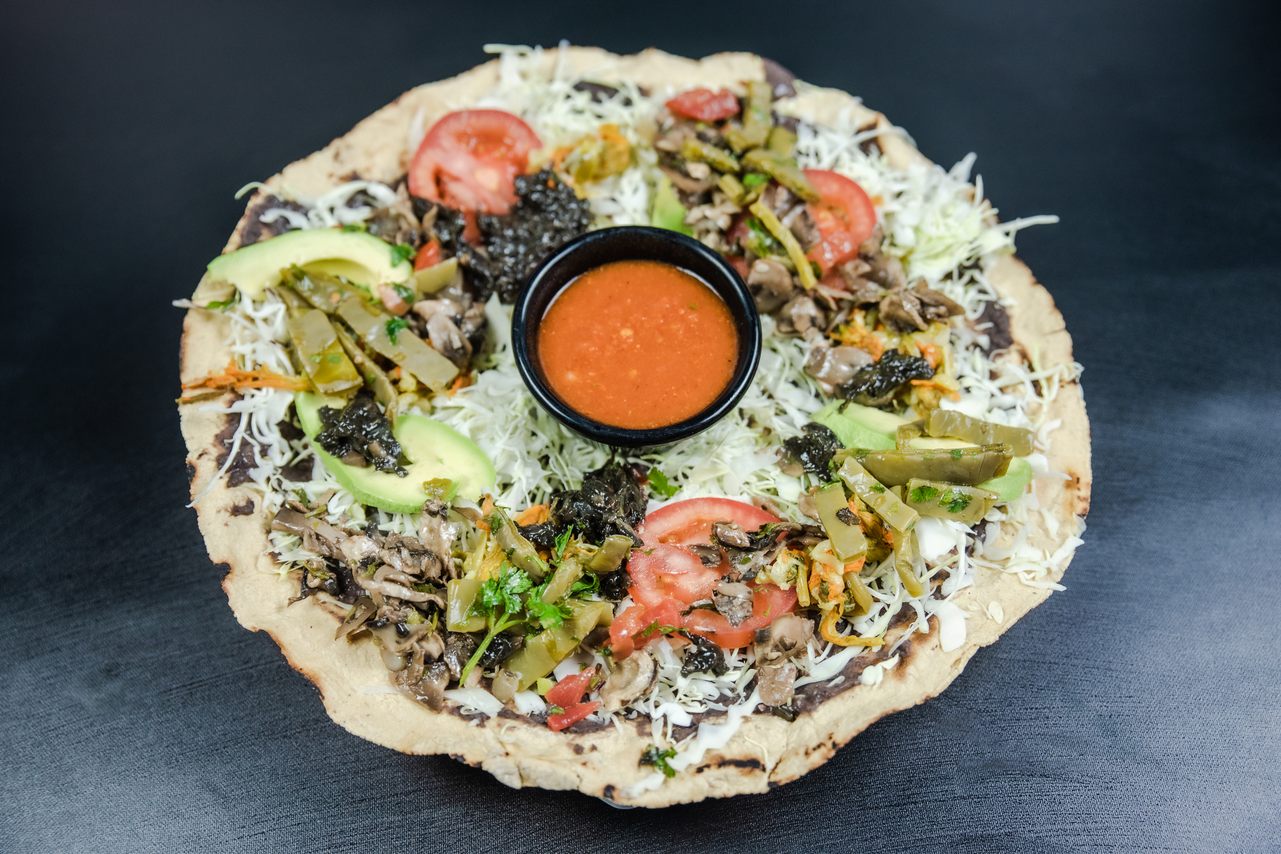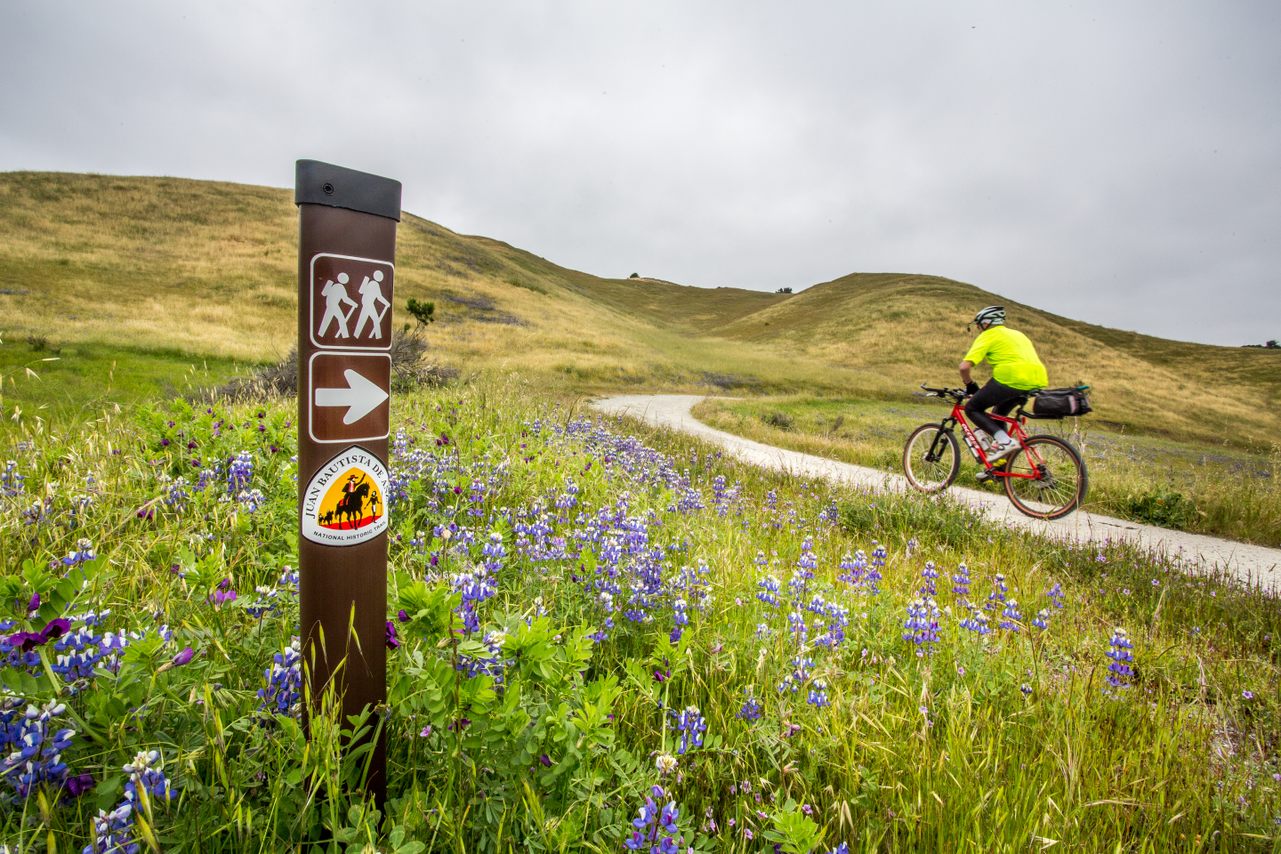
1. Pacific Grove Museum of Natural History
One of the first natural history museums in the country, the Pacific Grove Museum of Natural History has much to offer, from exhibits on plants, wildlife, geology, and the wonders of the natural world. The Rumsen Ohlone Basketry exhibit with rare baskets from the Indigenous nations along the Central Coast, along with native plants collected by contemporary Ohlone basket weaver Linda Yamane, is not to be missed.
The Chinese Fishing Village at Point Alones
There’s also an exhibit educating visitors about the Point Alones Chinese fishing village. The village was founded by a group of families who immigrated from China to California in the early 1850s. The inhabitants of the Point Alones village were among the first to commercially fish Monterey Bay, though when they found success they were pushed out of their daytime fishing grounds by white inhabitants. In response, the residents of the fishing village began fishing at night, for squid, launching another industry.
On a larger scale, the Chinese families at Point Alones faced the 1882 passage of the Chinese Exclusion Act, a law which prevented Chinese immigrants from becoming United States citizens, which required resident cards, and which stated that any Chinese-born person who left the country would not be permitted back in. On May 16, 1906, the village was burned down by other Monterey residents. In the hours that followed, the same residents looted the burned areas and remaining homes and threatened any villagers who attempted to return. Their community and livelihood destroyed, the families dispersed.
In 2022, the Pacific Grove City Council passed a resolution officially apologizing for the burning of the fishing village, and for the discrimination faced by Chinese Americans before and after. Today a Walk of Remembrance, held each May during AAPI Heritage Month and near the anniversary of the village burning, honors the lives of those who lived there.
165 Forest Ave, Pacific Grove, CA 93950

2. Boronda Adobe Center
From the Pacific Grove Museum of Natural History, a half-hour drive takes you almost 100 years farther into the past, when what is now Monterey County was still part of Mexico. On the outskirts of Salinas sits a building constructed 20 years before the city was even founded: the Boronda Abode.
José Eusebio Boronda built this adobe between 1844 and 1848 to house his wife, Maria Josefa Buelna, and their eventual thirteen children. Life here during Mexican colonial times was always varied, as the Borondas farmed, bartered, and at times held minor governmental positions. The Boronda Adobe is filled with artifacts that illustrate what day-to-day existence looked like: women sewed and embroidered while men rode horses and hunted. (José Eusebio, apparently, was especially known for hunting grizzly bears.)
The Boronda Adobe is notable for its “Monterey Colonial” style. It has a wraparound veranda and a roof that slopes four ways and is shingled with wood instead of clay tiles. Inside, the ceilings are white-washed with open beams, and each side of the home is adorned with a mantle and fireplace. It was acquired and restored by the Monterey County Historical Society in the 1970s and is now both a California Historical Landmark and listed on the National Register of Historic Places.
333 Boronda Rd, Salinas, CA 93907

3. National Steinbeck Center
Head across Salinas to dive deep on the history of the town’s native son, Nobel Laureate and Great American Novelist John Steinbeck.
Author of enduring classics including The Grapes of Wrath, East of Eden, Of Mice and Men, and Travels with Charley in Search of America, Steinbeck is one of Monterey County’s most famous former residents. With a bibliography like that, it’s not surprising that there is an entire museum dedicated to him—in fact, one of the largest museums dedicated to a single author in the entire country. And because so much of his work focused on the life of normal Americans, and so many of those stories are set in the Monterey area, his work offers visitors a glimpse of the history of the Salinas Valley.
Steinbeck was born in 1902 in a home just a five-minute walk from the National Steinbeck Center. He was raised in a middle-class home and encouraged by his high school teachers to pursue writing, which he did at Stanford University and later in Los Angeles. But he returned to Monterey County throughout his life. When he and his wife found themselves unable to pay rent during the Great Depression, they moved into his family’s cottage in Pacific Grove. During the years he spent there, he was able to begin writing some of his most famous works. He moved away in 1941, but returned again for a time in 1948.
Located in downtown Salinas, the National Steinbeck Center is dedicated not only to celebrating Steinbeck’s life but to highlighting his themes of social engagement and ecological awareness. The museum provides educational programming and events, and is the center of Salina’s revitalized downtown.
1 Main St, Salinas, CA 93901

4. Culturas Hidalgo y Oaxaca
By now you’re probably hungry for lunch, so swing over to a restaurant that serves the food of the growing Oaxacan community in Salinas: Culturas Hidalgo y Oaxaca.
Culturas offers food traditional to the Mexican states of Hidalgo and Oaxaca. (The states are near one another, though they do not share a border.) As you leaf through the huge menu, you’ll have a hard time deciding what to order: mole? Tlayudas? Molotes? A quesadilla? Though meat and cheese feature in many dishes, Culturas also offers a plant-based “Blue Zone” menu, part of a larger Monterey County initiative.
The restaurant is family-owned and known for its friendly service. Both the exterior and interior are painted with murals. It’s an eclectic, welcoming environment in which to enjoy authentic cuisine from a community that is becoming a bigger and bigger part of Monterey County’s history every day.
473 E Market St, Salinas, CA 93905

5. Spreckels Sugar Beet Factory Ghost Town
Just a ten-minute drive south of Salinas, you’ll find a town which was once bustling and is now a piece of history preserved in amber: the Spreckels Sugar Beet Factory Ghost Town.
The Spreckels Sugar Company was founded in the 1890s to refine sugar beets, one of two major sources of refined sugar, along with sugar cane. When industrialist, newspaper publisher, and entrepreneur Claus Spreckels began processing beets at his new factory south of Salinas in 1896, he knew his factory workers would need somewhere to live. So he created the company town of Spreckels.
When it was built, the Spreckels factory was the world’s largest refinery of sugar beets, and for decades the company was able to control the West Coast market for refined sugar. Workers lived in the town of Spreckels, just across the road, in simple houses. The town was small but had amenities like a firehouse, a church, a bar, a theater, a boarding hotel, and even a newspaper.
An epidemic of beet blight in the 1920s marked the beginning of the end of company ownership of the town of Spreckels, but the factory continued producing sugar until the early 1980s. (Along the way, it was used as a filming location for the film adaptation of Steinbeck’s East of Eden.) Eventually, following damage sustained in an earthquake, the factory was demolished in 1993.
Today many of the historic structures in the Spreckels company town still stand. Park your car and wander the 12-block town to see what it was like to live and work in fin-de-siècle Salinas Valley.
121 Spreckels Ave, Salinas, CA 93901

6. Juan Bautista de Anza National Historic Trail
In 1775 and 1776, a group of families from Sonora, Mexico traveled 1200 miles to San Francisco. Led by Juan Bautista de Anza, the purpose of their journey was to establish a trade route and begin the process of Spanish colonization of Alta California. The route that they traveled, cutting through the homelands of over 70 Indigenous communities, is now the Anza National Historic Trail, which aims to teach visitors about that complicated period of history, while highlighting the natural beauty of California, Arizona, and Mexico.
In Monterey County, the Anza NHT passes by lakes and creeks, and past historic cathedrals and missions. Though the National Park Service is hoping to create a 1200-mile non-motorized trail, much of the current Anza NHT follows roads, and in fact you’ll be driving near it as you travel from Spreckels to a hikable portion of the Anza Trail inside Fort Ord National Monument. Here the trail passes through grassland, maritime chaparral, and oak woodland. As you hike or bike you may be lucky enough to see red fox, bobcats, or the federally-protected California tiger salamander; in any season, you are almost sure to see wildflowers.
An informational kiosk at the trailhead educates visitors on the Anza expedition, which included soldiers, vaqueros, wives of both (including some who began the journey pregnant!), and over 100 children, all of whom faced hardships like dangerous weather and lack of food. The families came from mostly the lower classes of New Spain and were from a mixture of African, European, and Indigenous ancestry, which meant that early colonial California was a surprisingly diverse place.
Other wayside plaques tell the story of the people who lived here long before the Anza expedition passed through: the Indigenous inhabitants of the Central Coast. (One plaque explains the Ohlone art of weaving baskets from native plants like sedge.) While Indigenous communities helped the expedition on its way, the period of Spanish colonization soon turned violent, and Indigenous people were dispossessed of their land. Despite years of persecution, those communities still live in the area, and use Fort Ord National Monument for traditional activities.
Creekside Terrace, Salinas, CA 93908

7. WeatherTech Raceway Laguna Seca
After all that hiking, it’s time to sit and watch someone else speed around. Head to WeatherTech Raceway Laguna Seca, one of the more storied racetracks in motorsports. Constructed in 1957, it features a world-famous turn called the Corkscrew.
Car races were already popular in Monterey County before Laguna Seca was built, but the race tracks being used were considered too dangerous. The U.S. Army offered a lease on the Laguna Seca location in August of 1957, and the course was built in just two months. The famous Corkscrew turn was built when, according to local legend, the construction foreman went on lunch break and told his bulldozer driver to just find a way to get the track down the hill. The driver did, creating a turn with a blind crest that plunges almost 6 stories in just 450 feet with a hard left and then hard right turn. It’s one of a kind, and considered one of the most challenging turns in motorsports.
On November 9, 1957, the first ever race at Laguna Seca was held for an in-person audience of 35,000 people. Popular races hosted today include the Rolex Monterey Motorsports Reunion, where period-correct sports cars race each other. The race track has been featured in video games such as Gran Turismo, on the British show Top Gear, and in the 1976 movie Herbie Goes To Monte Carlo. In 1987, the raceway hosted both Pope John Paul II and The Grateful Dead (not, regrettably, at the same time).
Today, in addition to car races, Laguna Seca also hosts bike rides, concerts, and coffee events, and allows camping on the property.
1021 Monterey Salinas Hwy, Salinas, CA 93908

8. Castroville Japanese School Project at the Monterey County Historical Society
The Castroville Japanese Language School may be a small, one-room building, but its place in the history of Monterey County looms large.
In the 1920s and ‘30s, Japanese immigration to California led to the establishment of a 250-family Japanese community in the Salinas Valley. In fact, Castroville even held a small Japanese town within its borders. As the community grew, the first-generation, Japan-born immigrants, or Issei, wanted to make sure their American-born children, or Nisei, had a place to learn the language and traditions that were their heritage. In 1936, the Castroville Japanese Language School opened for that very purpose. For six years, Nisei children living in the Salinas Valley gathered here after school and on weekends to receive a cultural education.
Unfortunately, the school closed after the bombing of Pearl Harbor in December 1941. That event precipitated an ugly period of xenophobia, during which Japanese Americans were forced into internment camps. After the war, anti-Japanese sentiment was still prevalent, and housing discrimination meant that some Nisei men had to use the Japanese school building as a place to sleep.
To honor the Salinas Valley Japanese community and its history, the school building has been listed on the National Register of Historic Places and was restored with the guiding principle of “Kodomo no tame ni,” or “For the sake of the children.” It now serves as a community center once again.
11199 Geil St, Castroville, CA 95012

9. The Monterey County Agricultural and Rural Life Museum
End your Monterey Country day inland, learning what makes Salinas Valley the “Salad Bowl Of The World” at the Monterey County Agricultural and Rural Life Museum (MCARLM). With educational programming, farm equipment and artifacts, and several buildings, the museum gives a detailed view of agriculture from the late 1800s through World War II.
There are seven museum structures at the MCARLM, including the Olson Blacksmith Shop, an old schoolhouse, a tractor shed, a train depot and caboose, a house from Spreckels, and a History of Irrigation Museum. The Main Exhibit Barn has displays that show what it was like not just to farm, but to live in the area that became one of the most important agricultural hubs in the country. The area is best known for growing lettuce, which thrives in the moderate temperatures and coastal fog of the Salinas Valley.
If it’s all a little overwhelming, don’t worry—the museum offers free immersive tours.
1160 Broadway St, King City, CA 93930
This post is sponsored by See Monterey. Click here to explore more.


